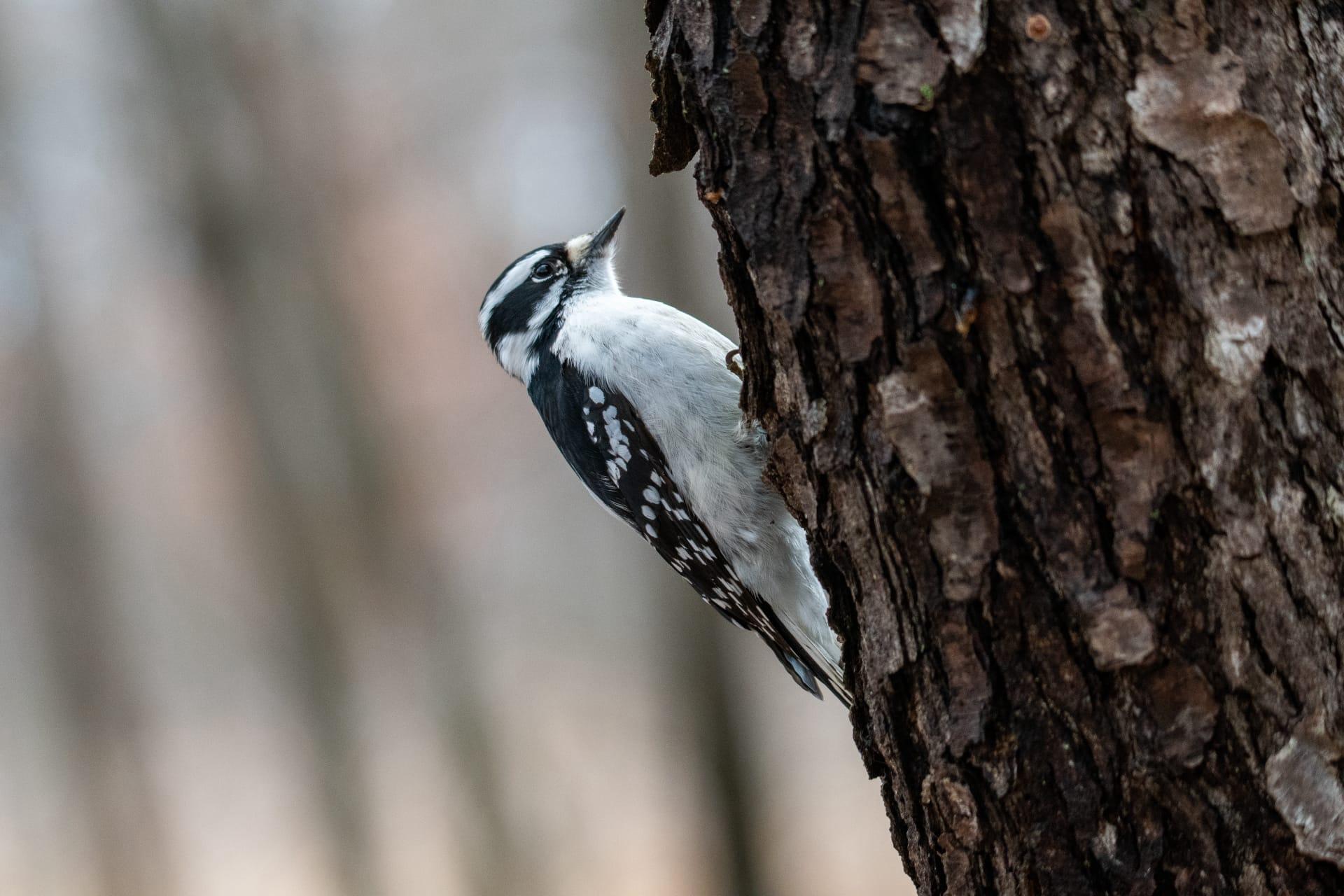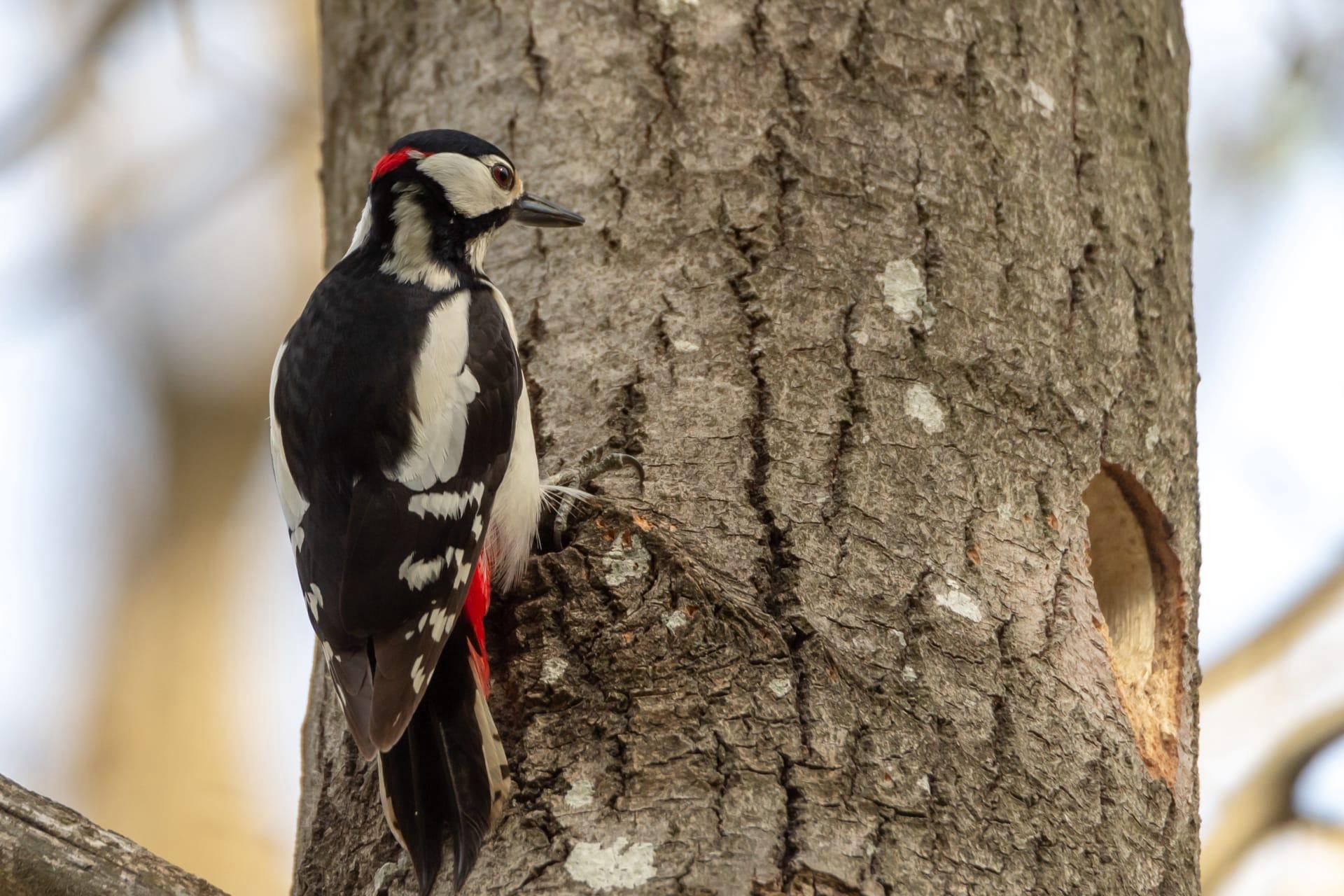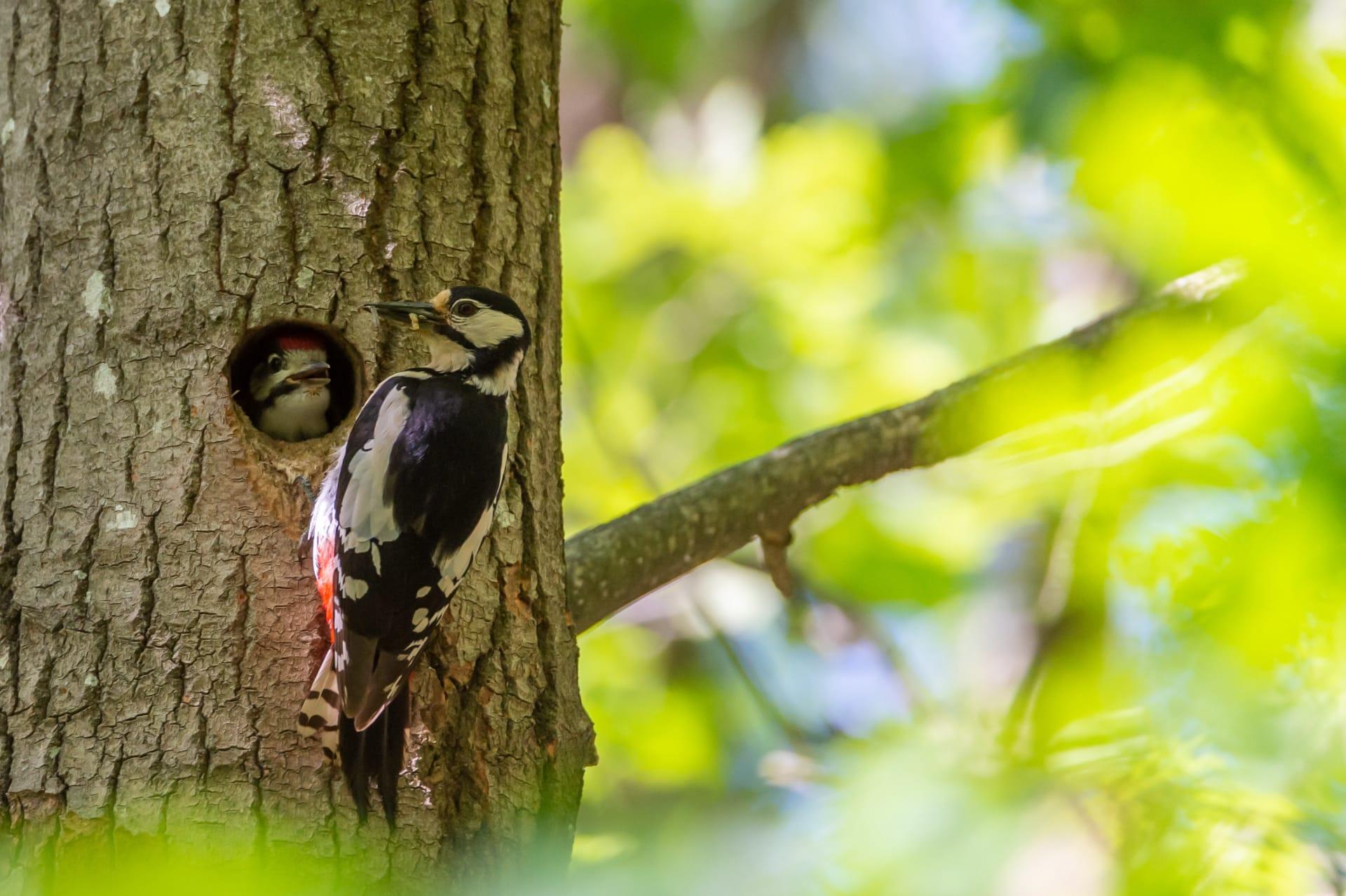1
Woodpeckers are renowned for their unique ability to peck at wood with incredible speed and precision. An astonishing fact is that a woodpecker can peck up to 20 times per second, which translates to around 8,000-12,000 pecks per day! This rapid pecking, with speeds recorded at 6-7 meters per second, is used not only for foraging insects but also for creating nesting sites in tree trunks and communicating through a drumming sound.
Another fascinating aspect of woodpeckers is their specialized anatomy that protects them from the intense impact of pecking. Their skulls have thickened bones and spongy areas to absorb shock, and their brains are tightly encased within the skull, reducing the risk of brain damage. Moreover, a woodpecker's tongue can extend up to three times the length of its beak, allowing it to probe deep into crevices for insects. This tongue is supported by a unique hyoid apparatus that wraps around the skull, cushioning the brain during rapid pecking.

2
Woodpeckers play a crucial ecological role in maintaining healthy forests. By excavating dead or decaying trees, they help in controlling insect populations, particularly those that are harmful to trees. These excavations also create habitats for other species, including birds and small mammals, fostering biodiversity. In fact, over 30 bird species and several mammal species are known to use woodpecker cavities for nesting and shelter.
Their communication methods are quite intriguing. Woodpeckers use a drumming technique, where they rapidly tap on resonant objects, to establish territory and attract mates. This drumming can be heard from long distances and varies in rhythm and frequency among different species. Interestingly, each woodpecker has a unique drumming pattern, much like a signature, which helps in individual recognition.

3
Woodpeckers have a diverse diet that goes beyond just insects. They feed on nuts, berries, fruit, and even tree sap. Some species, like the Yellow-bellied Sapsucker, create rows of small holes in tree trunks to access the sap, which also attracts insects that they feed on. These feeding habits make them important seed dispersers and pollinators in their ecosystems.
Despite their frequent tree interactions, woodpeckers don't get sap or resin on their feathers. They have a unique feather structure that repels sticky substances, keeping their plumage clean and functional. This adaptation is crucial for maintaining their agility and efficiency in flight.

4
Woodpecker's coloration and patterns are not just for aesthetics; they play a significant role in camouflage and species recognition. The bright reds, yellows, and other vibrant colors seen in various species are used to identify mates and establish dominance. Additionally, their coloration helps them blend into their environment, protecting them from predators.
Interestingly, the woodpecker family is one of the few bird groups that exhibit a behavior known as "anting." In this behavior, a woodpecker will intentionally allow ants to crawl on its body and feathers. It's believed this helps rid them of parasites, as ants secrete formic acid, which acts as a natural insecticide.

5
Woodpeckers have a strong presence in folklore and cultural symbolism around the world. In many cultures, they are seen as symbols of hard work, determination, and the bringing of change. Native American tribes, for example, view the woodpecker as a symbol of prophecy and a messenger of the earth, and they are often depicted in totems and art.
Woodpeckers are indicators of environmental health. Their presence and behavior can signal the quality of the forest habitat, as they are sensitive to changes in their environment, including pollution and deforestation. Conservationists often monitor woodpecker populations as a way to gauge the overall health of forest ecosystems.